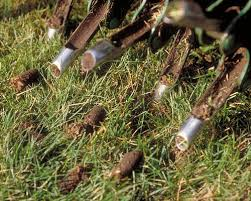Aeration
What Is Aeration?
Technically speaking, aeration is the naturally occurring process of air exchange between the soil and its surrounding atmosphere. Practically speaking, aeration is the process of mechanically removing small plugs of thatch and soil from the lawn to improve natural soil aeration. It’s commonly called “core aeration” in the lawn service industry, and you may have heard of it as soil cultivation (coring, spiking and slicing). Most homeowners simply call it aeration.
Aeration Benefits:
Core aeration can help make your lawn healthier and reduce its maintenance requirements through these means:
- Improved air exchange between the soil and atmosphere.
- Enhanced soil water uptake.
- Improved fertilizer uptake and use.
- Reduced water runoff and puddling.
- Stronger turfgrass roots.
- Reduced soil compaction.
- Enhanced heat and drought stress tolerance.
- Improved resiliency and cushioning.
- Enhanced thatch breakdown.
How Often Should You Aerate a Lawn?
Most lawns benefit from annual aeration. Heavily used lawns, or those growing on heavy clay or subsoils may need more than one aeration each year. Again, turf responds best when tine spacing is closer and penetration is deeper.
When is the Best Time to Aerate Lawns?
If you have cool season turfgrass such as Kentucky bluegrass and perennial ryegrass, both spring and fall are ideal times to aerate. In spring, aerate between March and May. Perform fall aeration between August and November. Aeration before or at the time of late season fertilization enhances root growth and improves spring green-up and growth. Warm season turfgrasses such as zoysia grass and Bermuda grass should be aerated in mid-spring to summer. Avoid aerating when warm season grasses are dormant – it may encourage weed competition. In addition, avoid aerating warm season grasses during spring greenup, and not until after their first spring mowing.

